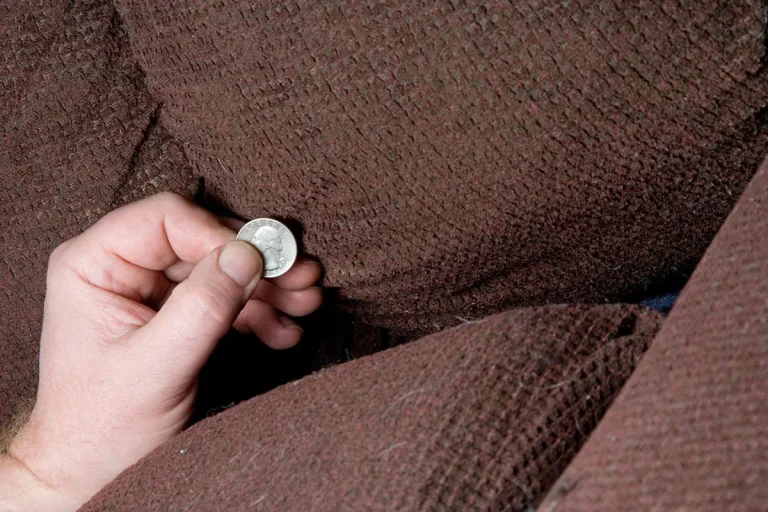The baobab tree holds deep spiritual meaning in African culture with its massive trunk and fruit that resembles fertility. If you’ve wondered what wisdom this ancient tree can share, you’ve come to the right place.
In short, the baobab represents life, fertility, spirituality, and is even considered the tree of life in Africa. Its massive trunk collects and stores life-giving water to nourish wildlife and local villages during drought.
In this comprehensive guide, we’ll cover the baobab’s symbolism in African folklore, its tree of life and fertility meanings, its spiritual connection in rituals, its presence in African proverbs and wisdom, and more details on this iconic tree’s essence and significance.
The Baobab Tree as Symbol of Life and Fertility
Giant tree with fruit resembling fertility
The mighty Baobab tree is a striking symbol of life and reproduction in African cultures. Its massive trunk and sprawling branches give it an ancient, sturdy presence in the landscape, evoking endurance and longevity.
At the same time, its large seedpod fruit resembles fertility, continuing the great tree’s generations.
Abundant source of food and water
The Baobab provides sustenance for both humans and animals, making it a vital supporter of life. Its edible leaves are a nutritious vegetable consumed by people. The pulp of its fruit is rich in vitamin C and has a tasty citrus flavor that can be eaten fresh or made into drinks and sauces.
Even the bark of the tree has been traditionally used medicinally for issues related to fertility.
In arid regions, the Baobab’s thick trunk stores water during the rainy season. Animals like elephants tear openings in the bark to drink this water during dry periods, benefiting from the tree’s generosity. By providing essential food and moisture, the Baobab nurtures life in the African savanna.
Seeds represent future generations
The abundant seeds inside each Baobab fruit encapsulate the concept of fertility, representing the promise of generations to come. Just one mature fruit can contain up to 2000 seeds! When Baobab seeds sprout and grow into new seedlings and trees, they pass on the enduring spirit of this iconic African life-giver.
| Spiritual Meaning | Symbolic Representation |
|---|---|
| Life and fertility | Massive size, fruit resembling seed pods |
| Sustenance and nourishment | Edible leaves, nutritious fruit pulp, water storage in trunk |
| Continuity between generations | Abundant seeds capable of propagation |
With qualities elevating its physical properties, it’s clear why the majestic Baobab carries profound meaning about the enduring and regenerative nature of life in African folklore. This iconic tree nourishes both body and spirit.
Spiritual Significance and Ritual Symbolism
Sacred sites for worship and ritual
The baobab tree is considered sacred in many African societies. Its massive size and great age give it an aura of ancient wisdom and endurance that lends itself well to spiritual rituals. Many tribes have designated certain ancient baobab trees as sacred sites for worship, prayer, initiation ceremonies, and other religious rites.
For example, the Bakor tribe of northern Ghana holds an annual festival under their sacred “Kukuo-bao” tree to ask the spirits for rainfall and bountiful harvests.
Tree spirits and the baobab in folk tales
Baobab trees are often featured prominently in African folk tales and myths as the dwelling place of friendly or protective tree spirits. According to a Zambian tale, the mother spirit Nanjilila lives in a baobab tree and provides food, shelter, and wisdom to lost travelers or those in need.
Other stories tell of mischievous spirits that inhabit the baobabs and play harmless tricks on people passing by the trees.
The hollowed interior and large dangling fruit of the baobabs lend themselves well to tales of magical creatures and tree spirits that transport travelers to enchanted new worlds by disappearing into the dark caverns and crevices of the mighty trees.
The hollowed tree as a spiritual portal
According to legend, ancient hollowed baobab trees served as spiritual portals between the physical and spirit worlds, allowing ritual specialists to communicate with ancestors and spirits. As one of the most long-lived organisms on the planet, baobabs were seen as existing in two worlds at once – rooted in the earthly realm for over a millennium in some cases, yet also connected to the eternal spirit world.
In certain initiation rites of passage, baobab trees play a sacred role. Boys would spend a night alone inside a hollowed trunk as a symbolic spiritual journey before becoming men. The initiate would emerge reborn the next day as if passed through a portal to another realm overnight.
Even today, the hollows of ancient baobab trees are sometimes still used for sacred initiation retreats in remote villages.
The Wisdom of the Baobab in African Proverbs
Stand tall and stay grounded like a baobab
With their massive trunks and far-reaching branches, baobab trees epitomize strength and endurance. For centuries, African cultures have looked to these trees for inspiration on weathering life’s storms. Many African proverbs highlight the baobab’s steadfastness amidst adversity:
“The baobab tree is not afraid of drought; it always has water inside” conveys that those with deep inner reservoirs can withstand even the most parched times. Just as the baobab stores water in its spongy trunk to survive harsh dry seasons, people must cultivate mental and spiritual reserves.
Another saying goes, “The baobab has roots that reach the ancestors.” This reminds us to draw wisdom from the past to navigate the present. Elders are venerated for their tested knowledge, just as baobabs become more majestic with time.
Despite their formidable presence, baobabs remain down-to-earth. “The baobab tree has its head in the clouds but keeps its feet on the ground” emphasizes the importance of remaining grounded even while aspiring to great heights.
Pursuing lofty goals need not undermine one’s sense of community and place.
Be fruitful and provide for your community
Baobabs produce nutritious fruit that sustain many rural communities during seasonal shortages. Locals also craft various essential items from baobab bark and fibers. Given their vital support role, a common motto is: “A village without a baobab is like a soup without salt.”
This saying extols baobabs for making valuable contributions that enrich community life. It inspires people to lead purposeful lives that strengthen social bonds and meet others’ needs. Baobabs teach that by pooling our talents and resources, we can create sustaining, meaningful impacts.
Weather the ups and downs of life with resilience
Due to their unusual shape, baobabs are nicknamed “upside-down trees.” This moniker celebrates their ability to bloom even when circumstances seem contrary. Regional stories convey: “The baobab tree blooms at night when the world is asleep,” reminding us that beauty and renewal happen in their own time, outside conventional frames.
There is also an Eastern African riddle: “What gets wetter the more it dries?” The baobab tree absorbs and stores water in its fibrous wood; even as moisture evaporates from its exterior, its interior gets wetter.
This symbolizes gathering strength through adversity—an ongoing theme in baobab iconography.
Ultimately, the baobab represents life’s cyclical nature: enduring droughts yet flowering again once the rains return. As one Ugandan adage goes: “The baobab tree dies standing. “ Even at the end of its thousand-year lifespan, its regal trunk remains mighty, awaiting fresh sprouts from fallen seeds.
The Baobab as Africa’s Tree of Life
Myths and legends name it the tree of life
The iconic baobab tree is interwoven into many African myths and folktales as the “tree of life”. Its massive trunk and sprawling branches have inspired many legends about gods and spirits hiding amongst its woodlands.
Some stories tell of how ancestors take refuge in baobab trees or how their spirits reside within their sturdy trunks, making these trees sacred shrines that connect the present to the past.
Sustains communities and ecosystems
Beyond the mythical, the baobab is an ecological lynchpin across the African savanna and desert landscapes. Their spongy trunks can hold up to 120,000 liters of water during the rainy season – forming a natural reservoir in difficult environments. Local communities tap this reservoir during droughts.
The leaves, fruit, and bark also provide nutritious benefits, feed wildlife, and supply materials for clothing and tools. In many ways, the survival of rural villages is tied to the fate of nearby baobab populations.
Scientists have also found that baobab trees support unique ecosystems around them – housing specific insect communities, unusual soil organisms, and providing hollow refuge or shade canopy cover for certain birds, primates, and antelope.
Some trees are up to 2,000 years old, meaning they are sources of amazing biological diversity as species upon species accumulate in their limbs over the centuries.
Symbolic of Africa’s life-force
Given its mythology and ecology, the baobab’s role as the “tree of life” symbolically captures Africa’s vibrant essence and diversity. Just as the baobab’s sprawling yet enduring form has weathered centuries in harsh landscapes while supporting whole communities, Africa boasts persistence, resilience, and profound cultural richness despite difficult histories.
| Africa’s population | Over 1.4 billion across 54 countries |
| Number of baobab species | 8 types across Africa |
| Oldest baobab age | 2,500 years |
Like the baobab, Africa contains multitudes – thousands of ethnic groups, languages, ecosystems, traditions, art forms, political structures – all interdependent and framed by a difficult past yet dynamic and enterprising character.
Much hope springs from Africa’s diversity and culture in the same way various species rely on the sprawling baobab for their survival. The baobab nurtures collective endurance, embodying the energy and spirit of the whole continent.
Conclusion
With its magnificent presence across the African plains and woodlands, the baobab has rightfully earned its spiritual status over the ages. This iconic tree sustains life, anchors cultural rituals, and shares an ancient wisdom that continues to inspire generations.
More than just a fascinating plant, the baobab represents community, resilience, fertility of both land and spirit, and the very essence of life in Africa. Understanding its rich symbolic meanings gives deeper reverence to this spiritual tree of life.






